#gorillawithautism
Note
do you know anything about native wildlife or plant life in palestine? particularly interested in primates because that's always what i'm most interested in but i'd really like to know more about what the animals and plants native to the land are like. what they were like pre israeli occupation and what sort of animal and plant life will need repairing when palestine is free. i hear a lot about the people and the human palestinian culture and it's wonderful but it's difficult for me to find anything regarding nonhuman life and i would like to learn more about it.
Honestly, the topic of Palestinian wildlife and its intersection with colonialism has been something that has increased a lot over the past couple of years. I can't offer anything about primate species (Palestine doesn't have any) but we do have lots and lots of very cool native animals like Gazelle and Caracal and Sand foxes and lots of bats and gerbils and snakes.
The Palestine Wildlife Society actually has a website with lists of all the animals found in Palestine and what level of conservation status they are at (plus the Arabic names): https://www.wildlife-pal.org/en
The Palestinian Central Bureau of Statistics also reported back in 2012 that:
There are about 51,000 living species (flora and fauna) in historical Palestine, constituting approximately 3% of global biodiversity.
In the West Bank and Gaza Strip there are an estimated 30,904 animal species, consisting of an estimated 30,000 invertebrates, 373 birds, 297 fish, 92 mammals, 82 reptiles, and 5 amphibians. Recent studies on birds in Palestine indicated that there are 373 species, which represent 23 Orders, 69 families, 21 Subfamilies, and 172 genera. The country also hosts 2,850 species of plants from 138 families.
And also added in 2014:
Israeli Violations are the main causes of Biodiversity deterioration
Based on 2012 data from ARIJ Research Institute, the Expansion and Annexation Wall has a total length of about 780 kilometers, of which 61% has been completed. The route of the Wall has isolated 680 km2 of Palestinian land between the Wall and the Green Line, comprising approximately 12.0% of the West Bank. This land comprises about 454 km2 of agricultural, pasture land and open areas, 117 km2 that were confiscated for Israeli settlements and military bases, 89 km2 of forest and 20 km2 Palestinian built-up land.
During 2013, more than eight thousand dunums of land were confiscated from Palestinians and more than 15 thousand horticultural trees were destroyed, causing considerable damage to the Palestinian environment and biodiversity.
The Israeli settlements and military bases also contribute in the biodiversity deterioration since there were 482 Israeli settlements and military bases in the West Bank at the end of 2013 contained around 563,546 settlers at the end of 2012.
Climate change is the most important natural factor that contributes to biodiversity degradation in Palestine. More animal and plant species have become under serious threat of becoming rare due to low rainfall, high temperatures, and the changing characteristics of the four seasons, in which drought is creeping into winter and spring.
The mountain Gazelle is currently endangered and this is due mostly to the building of roads and fences as well as predation and collisions with cars (the article also references the building of housing units in Mitzpeh Nafto'ah, which one of the areas where, in 2012, Israeli developers wanted to 'build up Jerusalem'). As of 2015, there were around 2,000 identified Gazelles within the Palestinian territories and historic Palestine. The mountain Gazelle look like this:
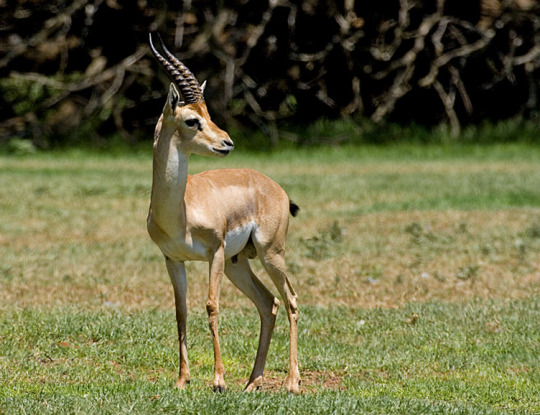
There have also been efforts for plant conservation in Palestine like the Iris Atrofusca, which has an extremely fragile population and is found almost exclusively within Palestine - a botanical garden was established for this particular Iris in the North Eastern Slopes of Palestine and in 2021, 120 clones of Iris Atrofusca were planted. Here is what they look like:

(also very interesting, sheep do not eat it!)
Probably most famous is the extinction of the Palestinian Crocodile, the last rhetorical circulation to 1935. Elizabeth Bentley wrote a great piece on it, you can read the full PDF on the Institute of Palestine Studies website or the edited (with permission) one published to Science for the People Magazine, I copied a segment from the latter here:
Colonial zoologists and collectors saw and appreciated Palestine’s bountiful plants and animals as objects of scientific inquiry. This scientific appreciation was inextricable from imperialist ambitions and the drive for profit. There were no wildlife protection laws in Palestine until 1924, which was after crocodiles’ likely regional extinction, and even then, the laws were loosely enforced. Colonial zoologists not only observed and wrote about Palestinian animals in their natural habitat. These zoological works were one of extraction and commodification.
Euphemistically termed processes of “collection” involved a network of human and nonhuman actors, whereby colonial zoologists hunted and killed Palestinian animals, studied them, and transported their remains overseas. Disemboweled, stuffed with wire and flax, and then displayed in glass cases, Palestinian animals were reanimated as spectacles for the viewing pleasure of museumgoers in London and Berlin.
While aligned with the broader trends in colonial zoology, the allure of the last Palestinian crocodile surpassed the confines of scientific inquiry; it adapted a symbolic, even mythical quality. Colonial zoologists’ ongoing speculation about Palestinian crocodile extinction necessitated a degree of willful (or internalized) unknowing about Palestine and Palestinians. Colonial zoologists were heavily dependent on Palestinians’ ecological expertise. Despite this, their writings convey mistrust and condescension toward Palestinians, along with a detachment from how local populations lived alongside Palestinian ecology.
Colonial scientific literature on Palestinian animals frequently perpetuated the racist, historically inaccurate outlook of “science for the West, myth for the rest.” Yet colonialist writings on the last Palestinian crocodile reflected their own symbolic attachments and investment in mythical thinking.
So there is a lot of work to do in regard to animal and plant conservation and several extinct animals I didn't bring up here but It is a deep dive and goes a lot farther than a lot of people consider. The Palestine Wildlife Society has a massive catalog and I hope you look through it!
1K notes
·
View notes
Note
do you have any factoids about the pieris genus? particularly pieris rapae cuz i named my after them :) my name is pae (pronounced like the english word "pay") taken from the end of their name
unrelated thing about my name but it's unintentionally an anagram for "ape" which is fun because i'm interested in nonhuman primates
weeble for your troubles

Honestly I don't know much about them beyond what you can read on their wikipedia page! So I'm sorry I can't share any fun facts but I can share a few nice photos for you to enjoy! These are all Pieris rapae although all flutterbies in Pieris are lovely

Fuzzy lil caterpillar up close!!! Photo by flossiepip

Less close but still good. They are SO fuzzy and adorable. Photo by matt227

A nice yellow adult by Judy Gallagher
Chrysalises can be brown, tan, green, yellow, or a combination of those, so here's a couple:


Photos by jacqui-nz and jellyelfhomestead
And finally the egg!

Obviously this is an extreme close up, and they're VERY tiny...like 1mm. Photo by Gilles San Martin
#gorillawithautism#gif#insects#bugs#weevil#butterfly#Pieris#cabbage white#caterpillar#chrysalis#garden white#egg#larva
109 notes
·
View notes
Note

silly creature for u
He's so silly he reminds me of zooboomafoo
6 notes
·
View notes
Note
There are so many possibilities!!! And don’t worry I put the gorilla back in the zoo. So it’s safe now. :)so you can totally tell me now!

YOU LIE! The gorilla is clearly still around and they watches us all
#ask#drinking-plum-juice#eddsworld#MLTS#i fuckin lost it when i say this user in my feed 🤣#you sir/ma’am made my day#thank you gorillawithautism
14 notes
·
View notes
Text
My amazing and generous friend @gorillawithautism organised a donation match fundraiser for this gofundme:
nafti surpassed his matching goal, leaving €318 unmatched and I had extra money this week, so I was able to match the rest!


If you also find yourself having extra money this week I would love to challenge you to match as much of me/nafti’s donation as you can to this gofundme to help this family evacuate Gaza!!!!
#love you pae <333333 I’m so happy you were able to get so much money donated!!!!!!!!!!!!!!#donating will also spite a dead zionist so it’s really a win-win#🦢
373 notes
·
View notes
Text
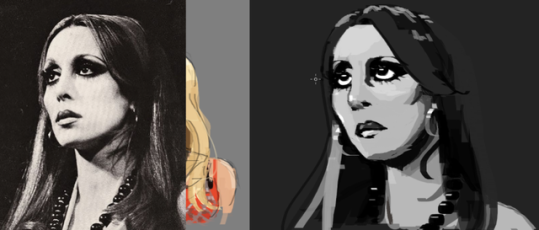
I drew Fairuz for @gorillawithautism :)
70 notes
·
View notes
Text

My boys <3
Feat a good gorilla by @gorillawithautism
#artists on tumblr#art#artwork#digital artist#fanart#drawtectives#deathianartworks#drawfee#drawtectives fanart#drawfee fanart#mimeatronic#mimeatronic fanart#checkers drawtectives#checkers#the animatronic#the animatronic drawtectives
82 notes
·
View notes
Note
I've been trying to learn Tsalagi/Cherokee bc that's what my mom is, but it's an endangered language and it's super hard to find any information so I couldn't find the word "explode" and the order might be wrong, but "kill yourself with fire" would look somewhat like or perhaps nothing at all like this:
ᎠᏓᎯᏍᏗ ᏨᏌ ᎬᏙᏗ ᎠᏥᎸ
And you say the above kind of like this:
a-da-hi-s-di tsu-sa gu-do-di a-tsi-lu
You can hear it pronounced if you look up the words here: https://language.cherokee.org/word-list/
I dont know if the grammar is correct at all with what I wrote but yeah it's something kind of like that.
KILL YOURSELF WITH FIRE LMAOOOOO I ADORE THAT SO MUCH 🙏🙏🙏 THAT'S AMAZING OMG thank you ❤️❤️ that's really cool to see
@gorillawithautism
27 notes
·
View notes
Text
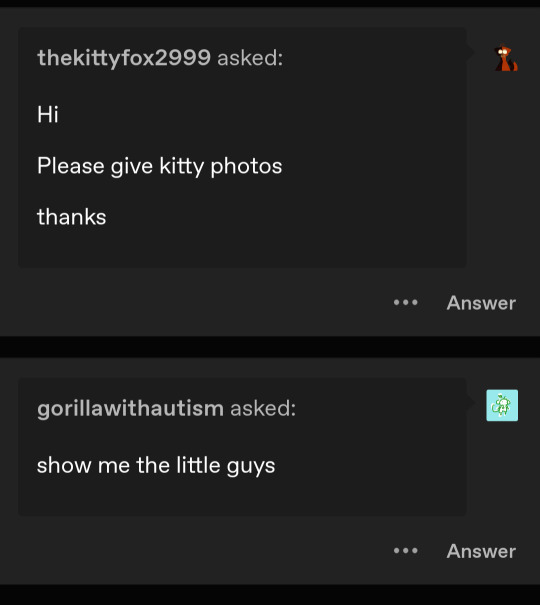
ask and ye shall receive @gorillawithautism @thekittyfox2999
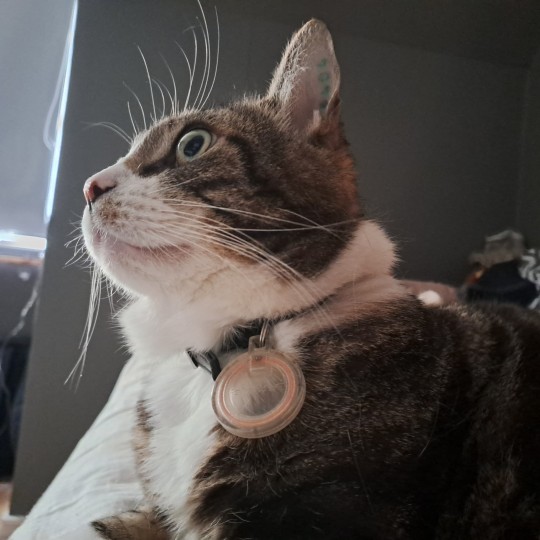

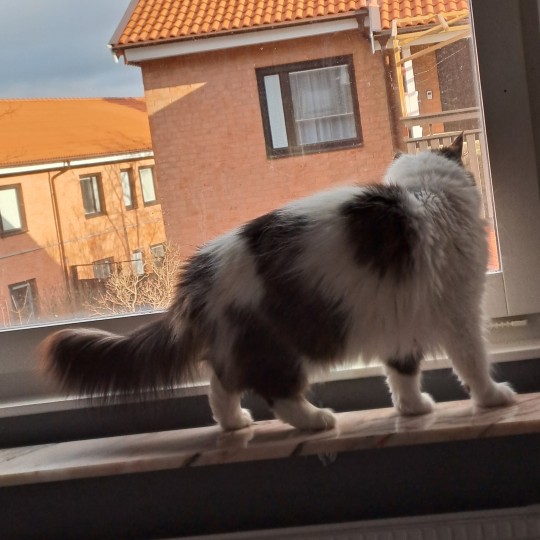



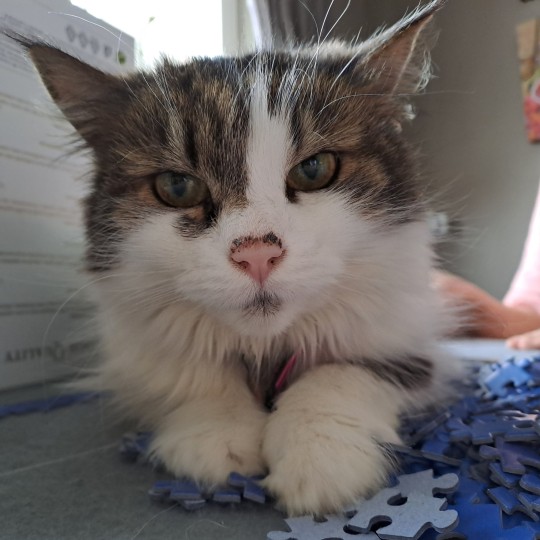


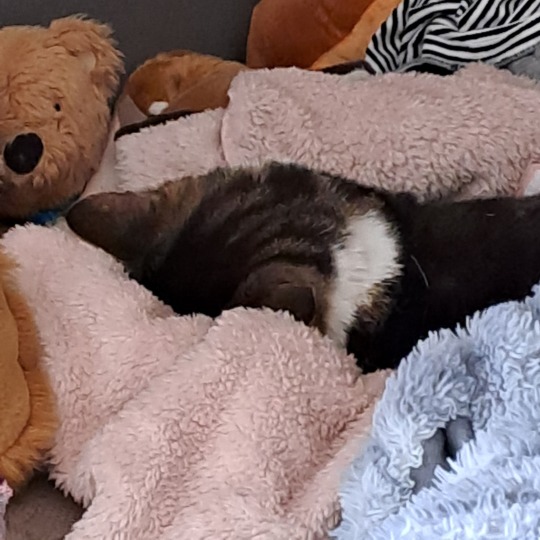
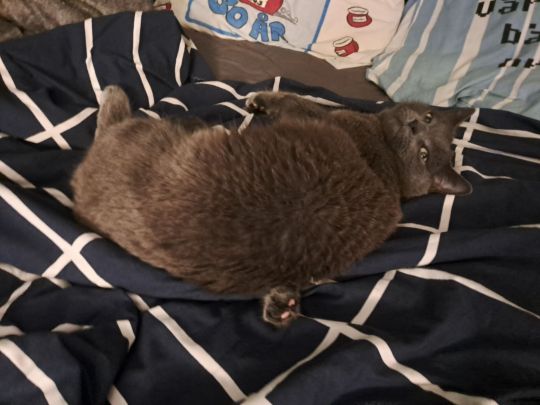

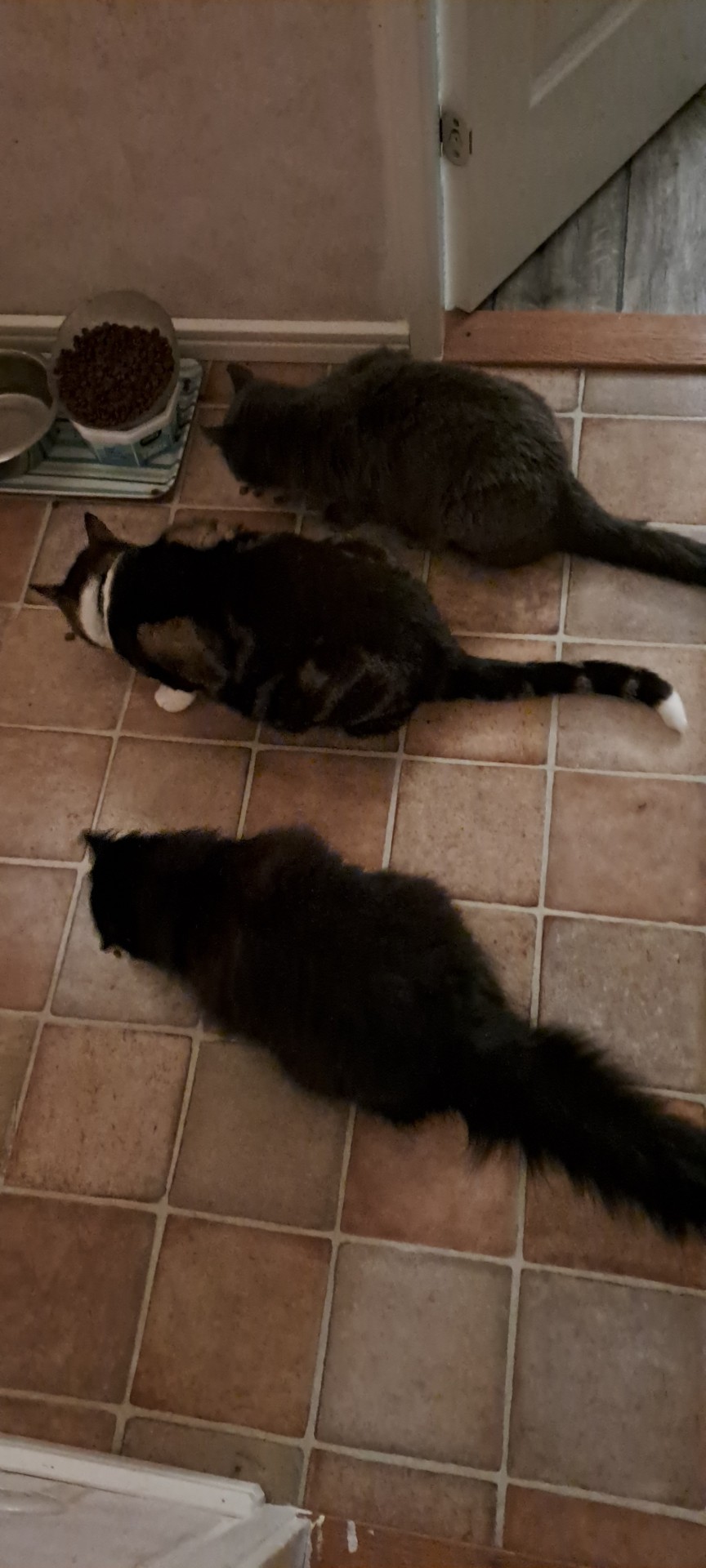

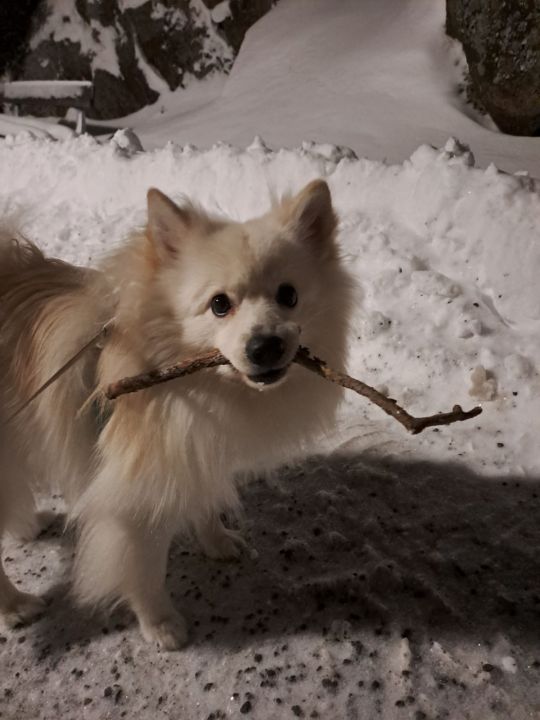
#1 braincell in my inbox today#mylittleguys#middle of second to last row. what is her paw doing there.#agnes. what is happening with you. what is going on here. THE WAY SHES LOOKING OVER HER SHOULDER HAS ME FLOORED WHAT 😭😭😭😭😭😭😭😭#that entire row actually. theyre all laying so weirdly 😭#my brother gets all the good agnes pics cus shes usually hanging out in his room#i showed skrållan the wonder of leaving through the window a few days ago and she sat outside so politely when she wanted to go in again
25 notes
·
View notes
Text
Summoning primate/great ape Tumblr @bignosebaby @gorillawithautism
Can a gorilla’s coat be brown? Are there any distinctive color morphs recorded? I know of Snowflake, but that’s about it. I ask because some of the gorillas at the Gladys Porter Zoo are sort of a deep auburn color, at least in the pictures. I think it’s really pretty

Photo by Joel Sartore
#great apes#gorillas#primates#primatology#i know technically most gorillas are already a brown-black color but this looks different#animal diversity#zoology
9 notes
·
View notes
Note
hi saaaiiff :3 you remind me of gladiolus flowers
here's an example i particularly like
https://images.app.goo.gl/9bx3fNPPHbZMjtdE7
HI!! I'm honored because these are beautiful, I love the colors and the shapes of the petals, thank you! <3
17 notes
·
View notes
Note

spiger :)
unfortunately (and accidentally) they are very dead but i was wondering if you could identify them? found indoors in san francisco, california. probably just a common thing but i'm still curious
vv definitely-real-bug provided as payment vv
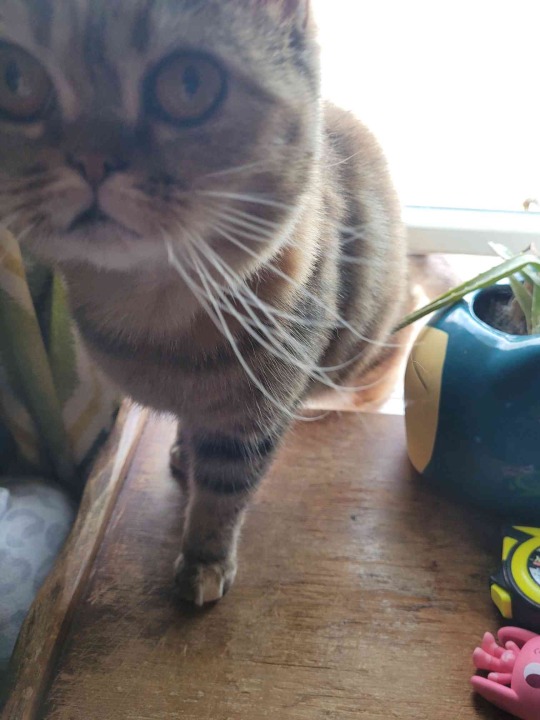
I'm afraid I really can't tell just from this photo! RIP, though. And I deeply love the second bug :)
59 notes
·
View notes
Note
3, 34, 40 <3
hiii
3) do you leave the window open at night?
> not usually, there's mosquitoes where I live and only recently did I get a screen for my windows so bugs wouldn't come in. I only leave it open to cool my room anyways
34) is there a song you know every word to by heart?
> way too many than I'd like to admit. "Que País É Este?" by Legião Urbana is one, and I didn't even know until my friend bet me to sing it in a karaoke. Besides that, a few songs by Ke$ha, because I liked her a lot as a kid, and more Legião Urbana songs probably (special interest)
40) did you have any snacks today?
> no :( (sad), but I wish. Snacking is my worst habit
3 notes
·
View notes
Text
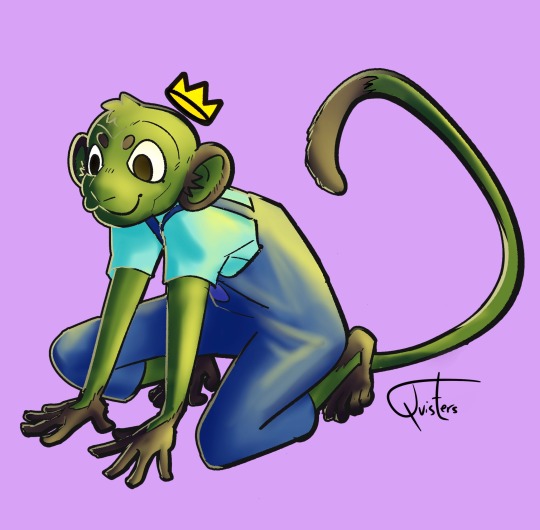
@gorillawithautism bc its sona design!!
18 notes
·
View notes
Text
I'm blocked by gorillawithautism. :(
3 notes
·
View notes
Text
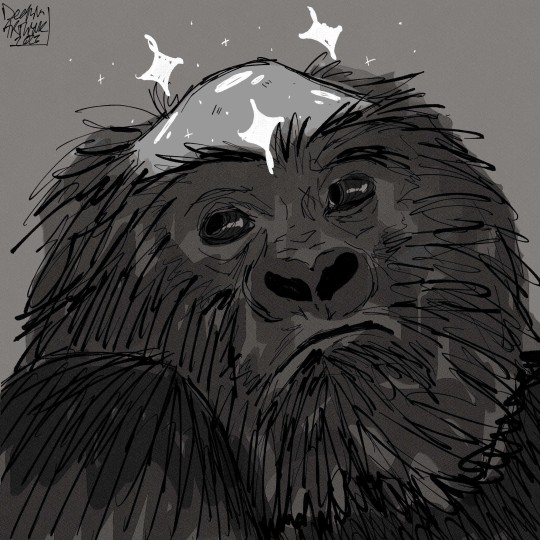
This is for @gorillawithautism and noone else (/j) but bald <3
#artists on tumblr#art#artwork#digital artist#gorillaaaaaaaaaah#lil bald man#hes me fr (british)#drew this for my bestieee#it holds a special place in my heart (gorilla shaped hole)#deathianartworks
59 notes
·
View notes